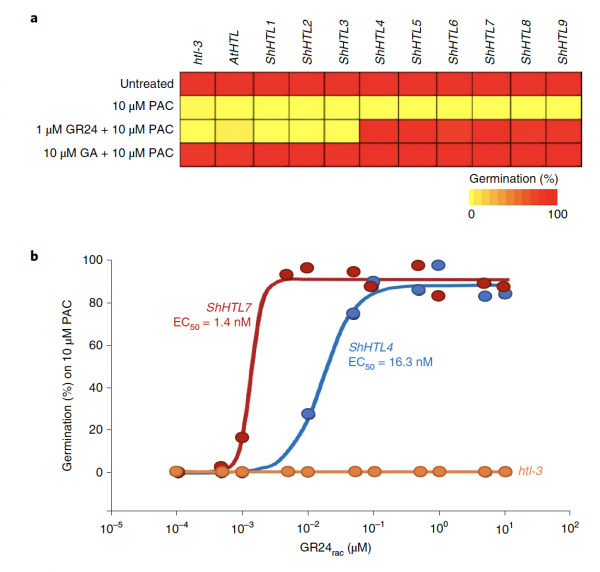The first committed step of a successful infestation is the germination of parasite seeds primarily in response to a group of related small molecule hormones called strigolactones (SLs), which are emitted by host roots. Despite the important role of strigolactones, it is not clear how host-derived strigolactones germinate parasitic plants. In contrast, gibberellin acts as the dominant hormone for stimulating germination in nonparasitic plant species by inhibiting a set of DELLA repressors. In our recent Nature Plants publication (Bunsick et al., 2020; https://rdcu.be/b6dY6), we show that expressing strigolactone receptors from the parasitic plant Striga hermonthica in the presence of strigolactones circumvents the gibberellin requirement for germination of Arabidopsis thaliana seed. Striga receptors coopt and enhance signalling through the AtHTL/KAI2 pathway, which normally plays a rudimentary role in Arabidopsis seed germination. AtHTL/KAI2 negatively controls the SMAX1 protein and loss of SMAX1 function allows germination in the presence of DELLA repressors. Our data suggest that ligand-dependent inactivation of SMAX1 in Striga and Arabidopsis can bypass GA-dependent germination in these species. We propose that AtHTL/KAI2 pathway is a latent one in autotrophic plants like Arabidopsis but evolved to be the dominant pathway responsible for gemination of parasitic plants like Striga.
Our article was featured in a Nature Plants News and Views (https://rdcu.be/b6dZc). For a behind-the-scenes look into how we developed this story, check out the feature in The Varsity (https://thevarsity.ca/2020/08/01/).
